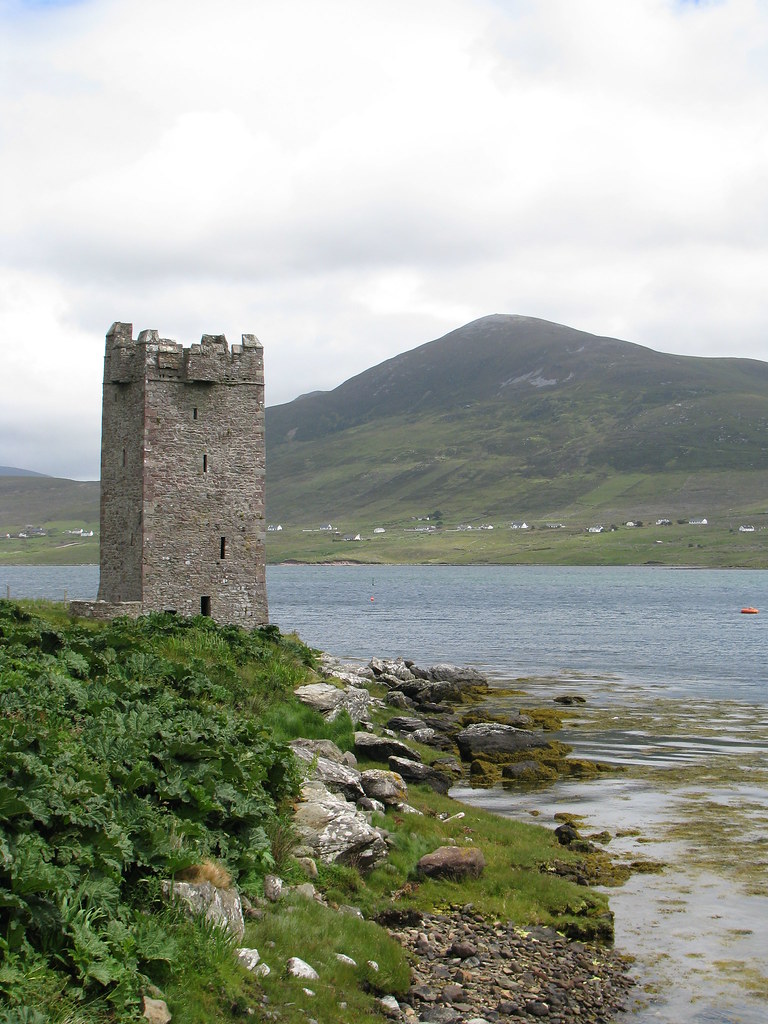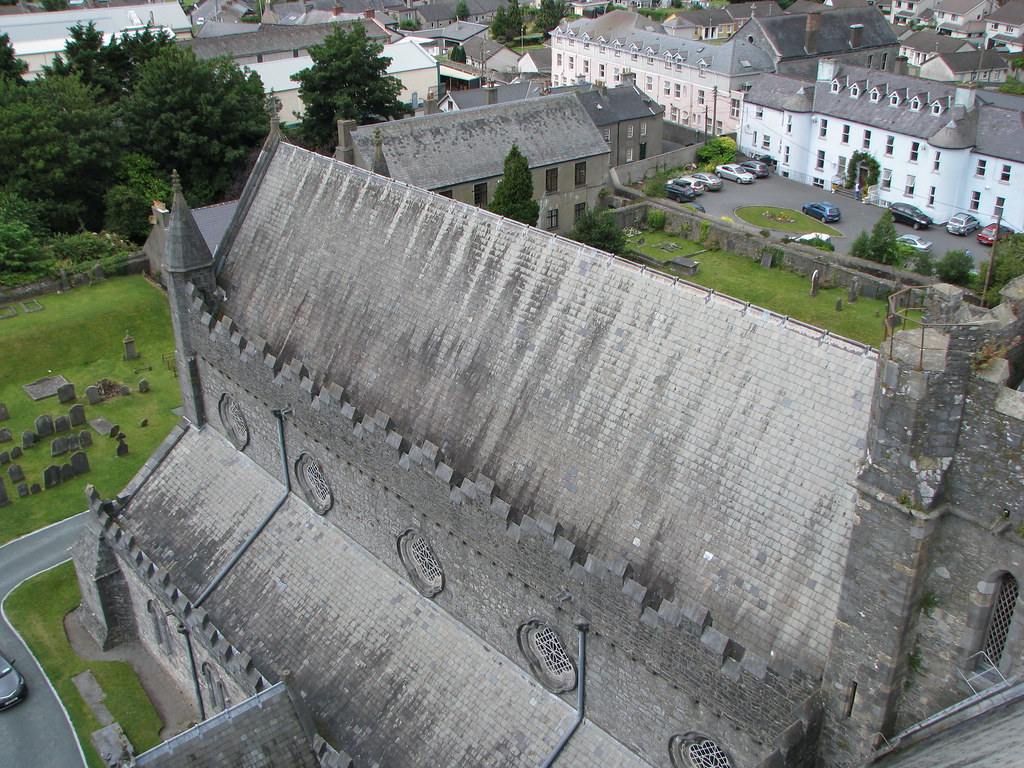My typing fingers grew a little rusty over the last couple of weeks. Those of you who follow 12MC on Twitter already knew that I was in Ireland because I posted a steady stream of photographs. What may have been less understood was that I wrote all Twelve Mile Circle articles ahead of time. That’s right, the blog was on autopilot for the duration. However, I was still able to approve comments, update the complete index map and attend to administrative tasks.
The next several articles will relate to my Irish adventures. Thus it will shift towards a travelogue rather than tackle the usual compendium of geo-oddities. I know historically, those haven’t been the most viewed articles. So I won’t take it personally if readers decide to skip a few until we get back to normal business. I like writing them and that’s what I’m going to do.
When one thinks of Ireland in a somewhat stereotypical sense, one often envisions medieval structures like castles, abbeys, and cathedrals of weathered stone in various states of decay. Maybe that’s just me. Nonetheless, that seemed like a good starting point for the series. My younger son wanted to see “lots of castles” and that’s what I fed him. I think even he grew tired of walking through crumbling ruins by the time we left. I’ll focus on four ancient buildings in four different Irish counties that we visited.
Granuaile’s Tower

This might be my favorite photograph from the trip except for maybe the puffin, although I’m getting ahead of myself.
Achill Island on the western coast of County Mayo appeared as a quiet, unspoiled landscape. The largest of the tourist hordes seemed to skip it entirely. Known more for its beaches and scenery, Achill had only one ancient fortification still standing, Granuaile’s Tower at Kildavnet (map). It had an impressive backstory.
“The Tower at Kildavnet, in the south-east corner of Achill Island, is a perfect example of a 15th century Irish tower house. The Gaelic Chiefs of the time copied a Norman design and constructed many such tower houses. The tower at Kildavnet is thought to have been constructed by the Clan O’Malley in about 1429, but is associated locally with a descendant of the original builders, Grace O’Malley or Granuaile. This legendary pirate queen is thought to have been born around 1530 and died in about 1603.”
The tower belonged to a woman of significant power and means. The Irish called her the “The Pirate Queen of Connaught.”
Gráinne Ní Mháille (Grace O’Malley in its anglicized version) inherited the family business from her father. Some would characterize it a shipping enterprise while others might note elements of piracy. The lines were a little fuzzier back then. Nonetheless Granuaile established strongholds all along the western Irish coast. Thus this tower formed part of a network she used to protect and control her domain.
Ross Castle

Ross Castle in Killarney (map) provided another excellent example of an Irish tower house of the period. It dated probably to the 15th Century. Originally the O’Donoghue clan built it. Later the Brownes of Killarney owned it and finally it served as a military barracks until the 19th Century.
Today it’s an often-visited part of Killarney National Park in County Kerry. Ross Castle sat conveniently along the famous “Ring of Kerry” tourist road. So it evolved into a more-or-less obligatory stop for sightseers in one of the most heavily visited areas of Ireland. This was the only place where I saw signs in the car park warning people to remove valuables from their vehicles. Also this was the only place we couldn’t see inside the castle because tours were sold out. Still, if one is in Killarney, one should probably visit Ross Castle. That’s true if only to book a boat from there to visit Innisfallen Island, which I’ll talk about in a later episode.
Rock of Cashel

The Rock of Cashel was a real castle (map), not simply a tower house for pirates or lesser nobility. The imposing Rock of Cashel — Carraig Phádraig — served as the home of the Kings of Munster, in what is now County Tipperary.
It was here that St. Patrick converted the reigning king to Christianity in the 6th Century according to legend. A later king, Muirchertach Ua Briain, gave his mighty fortress to the Church around the year 1100. An imposing cathedral later rose on the grounds in the 1200’s. The site declined over several centuries although more recent restorations preserved what remained. Visitors can now wander the grounds generally at will.
St. Canice’s Cathedral

I enjoyed St. Canice’s Cathedral of the Church of Ireland, in County Kilkenny (map). The church itself was remarkable although I’d recommend its Round Tower as something to be included on the itinerary too.
“Round towers – a particularly Irish feature – were built at major religious sites as places of refuge for body and treasure, during the times of the Viking raids from the end of the 8th century. St Canice’s round tower offers a breathtaking 360 degree view of the surrounding countryside from its summit – hardly surprising since that was the other reason they were built. The presence of the round tower here is the clearest sign of the antiquity of St Canice’s as an important religious site. There is a reference that suggests a mid-9th century date for it, making it the oldest standing structure in the City.”
The thought of climbing a 30 metre (100 ft.) tower that was 1,200 years old might seem unnerving to many visitors. As a case in point, my wife and older son decided to forgo the opportunity. It was up to my younger son and I to uphold the family honor and reach the summit. I won’t lie — it wasn’t for the faint of heart.
The climb involved a succession of seven ladders leading to small wooden platforms in increasingly narrow spaces as the diameter of the tower tapered towards the top. This wouldn’t be enjoyable for those with claustrophobia, acrophobia, or irrational fears of old towers crumbling at any moment whatever phobia that might be named. Fortunately my son and I had none of those fears. Thus, we reaped a splendid bird’s eye view of surrounding Kilkenny.
My kids never did understand why I quietly muttered “You Bastards!” every time someone mentioned Kilkenny.
Others
We visited a number of other medieval structures, too.
- Innisfallen Abbey (map/photo)
- Muckross House (map/photo)
- Skellig Michael (map/photo)
- Dunbeg Fort (map/photo)
- Cahir Castle (map/photo)
- Hore Abbey (map/photo)
- Holycross Abbey (map/photo)
- Kilkenny Castle (map/photo)
I may feature some of these in later installments. Still, others might not make the cut. Feel free to check images I’ve posted on each of these places using the photo links provided.

Leave a Reply